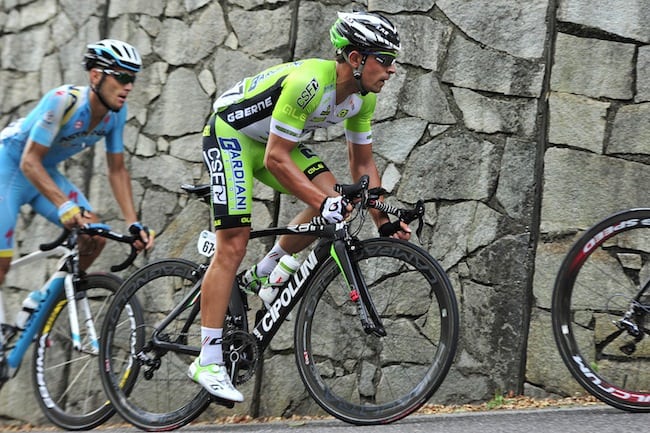Even though we first saw Cipollini bikes showing up under professional riders in early 2010, it took us until 2012 to snag our first long-term test bike. Mirroring the business model laid out by some of Italy’s finest sports car companies, the Italian-made Cipollini can be hard to get and very expensive. We weren’t sure how this would work for the new brand in the long run, so we decided to revisit Cipollini and the RB1000 to see where they’re at two years later.
THE BIKE
With a total of five models in their line, producing about 2000 bikes per year, Cipollini is still very small when compared to any mainstream brand out there. Realistically, though, Cipollini’s ability to grow is quite limited. For one, when it comes to pricing, they are the Lamborghini of bikes, and even though many might obsess over owning one, it’s just not a reality for most of us. Second, part of what makes them so pricey is the fact that they’re doing something few others attempt outside of Asia building their own monocoque frames. Following a Cipollini all the way from engineering, production and paint is literally an Italian tour. There are other all-Italian-constructed bikes out there, but most use the simpler lug construction compared to the Cipollini’s monocoque. Of Cipollini’s five models, the RB1000 still maintains its place as their premier race bike.
Like Mario Cipollini himself, the RB1000 can’t be mistaken for anything else out on the road. Its extreme downtube shaping flanks the front wheel, while the seat tube’s curvature allows the rear wheel to tuck right up to it. In addition to those aero details, it becomes quite clear what the RB1000 was designed for just by looking at its head tube. To begin with, a large 1 1/2-inch lower headset bearing is used to maximize stiffness on the short, 127mm (size large frame) head tube, which also has a small nose-cone-shaped profile, presumably to improve aerodynamics. Stout, low and aero-definitely a racer’s bike.
THE RIDE
It just so happened that our RB1000 test bike was a race bike, a real race bike. Due to short supply and high demand, Cipollini had to send us a team bike from the Pro Continental Italian team they sponsored in 2013, Bardiani Valvole- CSF Inox. Since the team uses a production frame set, we had no issues using it for the test. After the initial disappointment of not getting a bike that exuded Italian passion through its paint scheme, we grew to appreciate the naked finish that allowed the 1K carbon weave to shine through-simple yet elegant. As one of the greatest sprinters of all time, it’s of no great surprise that Mario Cipollini had an eye on speed for the RB1000. With a combination of an extremely rigid front end and the downtube’s massive box section where it joins the seat tube, accelerating felt pure and unhindered from any power-robbing flex. Once we turned our attention to some varied terrain, the bike’s nearly 100cm (size large) wheelbase became apparent, at least on the descents.
Although it might be longer than the U.S. criterium racing crowd might want, you could descend much more relaxed compared to a bike with a 1.5cm-shorter wheelbase. Going up, the RB1000 felt lighter on the climbs than what we expected from its less-than-impressive 16.1-pound weight. Once again, we’re going to chalk this up to the frame’s overall stiffness, which gives it a good, efficient feel while climbing. In our original test of the RB1000 back in 2012, our test bike was equipped with Lightweight Meilenstein wheels, which helped drop the weight down to 14.8 pounds.
THE VERDICT
Kudos to Cipollini for staying true to their roots and maintaining Italian construction throughout their line. Even with the RB1000’s price tag well above almost every other high end bike on the market, the craftsmanship that goes into each one, its exclusivity, and the very fact that the performance is there to back it all up puts them in a different league. Cipollini’s least expensive road model is the Bond, which sells for $4400 (frame and fork), and uses a monocoque main triangle while adopting a more traditional-looking frame design.
PUNCH LINES
* Full-Italian design and construction
* Exclusivity doesn’t come cheap
* Fast and fancy
STATS
Price: $6995 (frame and fork)
Weight: 16.1 pounds
Sizes: XXS, XS, S, M, L (tested), XL, XXL
Cipollini




Comments are closed.